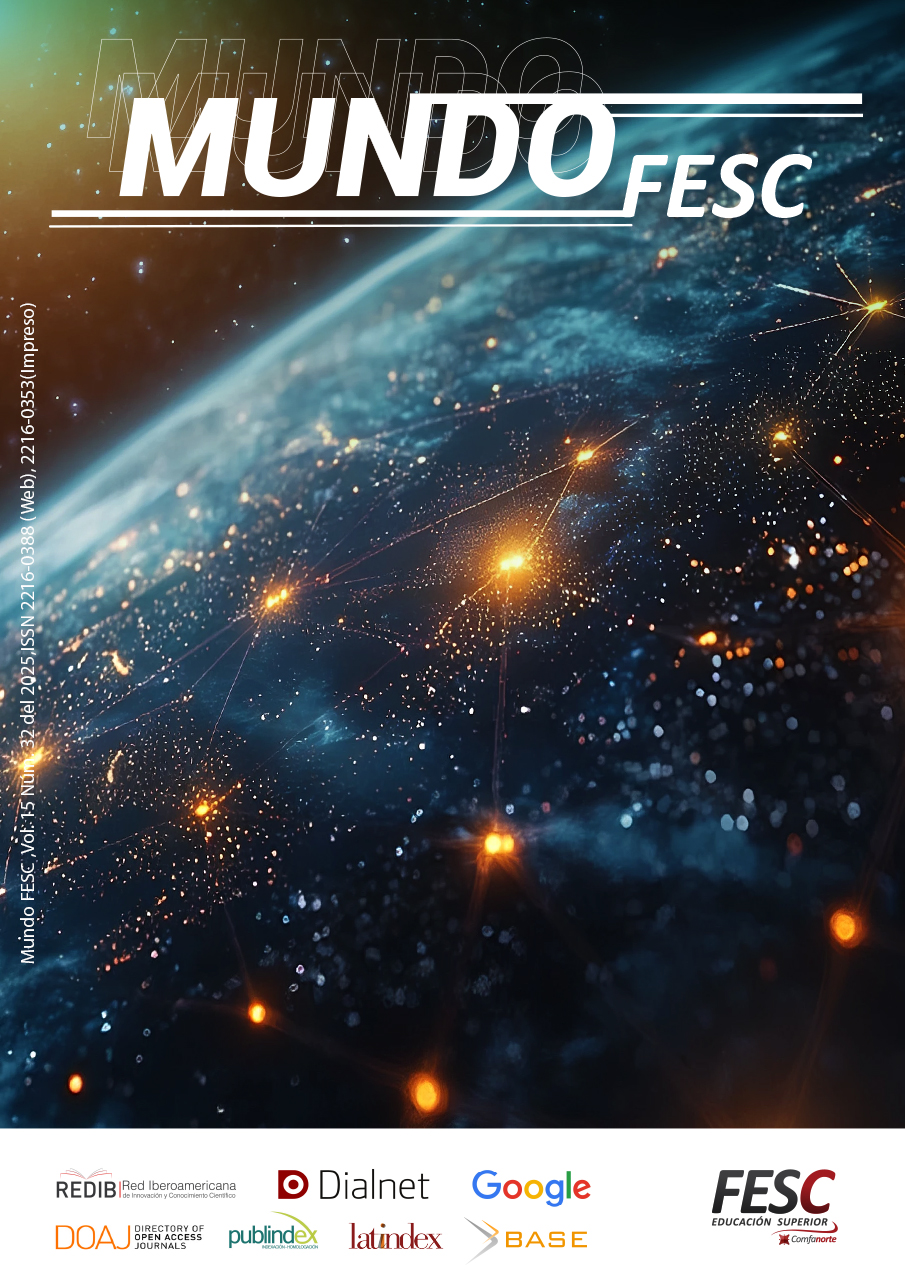Challenges and consequences of the container crisis on international trade
DOI:
https://doi.org/10.61799/2216-0388.1440Keywords:
Container crisis, international logistics, economics, covid-19, seaportsAbstract
The container crisis, triggered by the Covid-19 pandemic, has impacted international trade due to port closures and restrictions implemented to contain the virus, resulting in reduced transportation capacity and congestion in Western ports, mainly those with imports from China. This article, based on secondary sources and logistics sector data, analyzes this crisis and presents as results the initial difficulties in the global supply of essential goods and the shortage of containers, impact on goods transport and high logistic costs. It concludes that the adaptability of logistics companies and the implementation of effective strategies become fundamental to strengthen international trade and prepare for future challenges in an increasingly interconnected world.
Downloads
References
[1] R. Singh and S. Singh, “Container crisis and high freight costs India’s policy ambivalence,” Econ. Polit. Wkly.,
pp. 19–22, 2021, Accessed: Jul. 31, 2023. [Online]. Available: https://pesquisa.bvsalud.org/global-literature-on-novel-coronavirus-2019-ncov/resource/pt/covidwho-1710985
[2] D. Guerrero, L. Letrouit, and C. Pais-Montes, “The container transport system during Covid-19: An analysis
through the prism of complex networks,” Transp. Policy, vol. 115, pp. 113–125, Jan. 2022, doi: 10.1016/j.tranpol.2021.10.021. DOI: https://doi.org/10.1016/j.tranpol.2021.10.021
[3] R. S. Gray, “Agriculture, transportation, and the COVID‐19 crisis,” Can. J. Agric. Econ., vol. 68, no. 2, pp. 239–243, Jun. 2020, doi: 10.1111/cjag.12235. DOI: https://doi.org/10.1111/cjag.12235
[4] L. Fedi, O. Faury, P. Rigot-Muller, and N. Montier, “COVID-19 as a catalyst of a new container porthierarchy in Mediterranean Sea and Northern Range,”Maritime Economics & Logistics, vol. 24, no. 4, pp.747–777, Dec. 2022, doi: 10.1057/s41278-022-00223-z. DOI: https://doi.org/10.1057/s41278-022-00223-z
[5] J. S. L. Lam, Q. Li, and S. Pu, “Volatility and Uncertainty in Container Shipping Market,” in New Maritime Business, Springer International Publishing,2021, pp. 11–32. doi: 10.1007/978-3-030-78957-2_2. DOI: https://doi.org/10.1007/978-3-030-78957-2_2
[6] Z. Sun and Y. Zhang, “Strategic Crisis Response of Shipping Industry in the Post COVID-19 Era: A Case of the Top 10 Shipping Lines,” J. Mar. Sci. Eng., vol. 10, no. 5, p. 635, May 2022, doi: 10.3390/jmse10050635. DOI: https://doi.org/10.3390/jmse10050635
[7] J. Charłampowicz, “Maritime container terminal service quality in the face of COVID-19 outbreak,” J. Maritime
Stud., vol. 35, no. 1, pp. 93–99, Jun. 2021, doi: 10.31217/p.35.1.10. DOI: https://doi.org/10.31217/p.35.1.10
[8] T. Rožić, D. Naletina, and M. Zając, “Volatile Freight Rates in Maritime Container Industry in Times of Crises,” NATO Adv. Sci. Inst. Ser. E Appl. Sci., vol. 12, no. 17, p. 8452, Aug. 2022, doi: 10.3390/app12178452. DOI: https://doi.org/10.3390/app12178452
[9] A. Toygar, U. Yildirim, and G. M. İnegöl, “Investigation of empty container shortage based on SWARA-ARAS
methods in the COVID-19 era,” European Transport Research Review, vol. 14, no. 1, pp. 1–17, Mar. 2022,
doi: 10.1186/s12544-022-00531-8. DOI: https://doi.org/10.1186/s12544-022-00531-8
[10] A. S. Grzelakowski and Gdynia Maritime University,“Zakłócenia incydentalne w łańcuchu dostaw — analiza
ripple effect w świetle badań literaturowych,” GMiL,vol. 2022, no. 12, pp. 10–20, Dec. 2022, doi:10.33226/1231-2037.2022.11.2. DOI: https://doi.org/10.33226/1231-2037.2022.12.2
[11] H. Abous, M. Hamiche, and M. El Merouani, “The impact of Covid-19 on the port environment: The case of Tanger Med container port, Morocco,” E3S Web of Conferences, vol. 234, p. 00025, 2021, doi:10.1051/e3sconf/202123400025. DOI: https://doi.org/10.1051/e3sconf/202123400025
[12] K. Ö. Efes, “The impact of economic activities in US on container freight rates: An application on China-USA
route,” bmij, vol. 9, no. 4, pp. 1599–1610, Dec. 2021,doi: 10.15295/bmij.v9i4.1958. DOI: https://doi.org/10.15295/bmij.v9i4.1958
[13] A. Toygar and U. Yıldırım, “The changing structure of international trade: An evaluation of the liner shipping
industry,” Toygar A., Yıldırım U., The Changing Structure of International Trade: An Evaluation of the Liner Shipping Industry, “New Normal and New Rules about International Trade, Economics and Marketing”,
Darıcı Burak,Ayhan Fatih,Chiu Candy Lim, Editör, Peter Lang Publishing, Inc., Berlin, ss., vol. 103, p. 112, 2021, Accessed: Jul. 31, 2023. [Online]. Available: https://avesis.ktu.edu.tr/yayin/1cbd0e44-5159-4623-b570-976e1c234bba/new-normal-and-new-rules-about-international-trade-economics-and-marketing
[14] R. Ivče, L. Tomić, A. Zekić, and D. Mišković, “Časopis Pomorskog fakulteta Kotor - Journal of Maritime Sciences Vol. 23, No. 2/2022 - Renato Ivče, Leon Tomić, Astrid Zekić, Darijo Mišković.” https://www.jms.ucg.ac.me/jms_archive/v23_2_2022/jms_23_02_2022_09.html (accessed Jul. 31, 2023).
[15] M. Abe and L. Ye, “Building Resilient Supply Chains against Natural Disasters: The Cases of Japan and Thailand,” Global Bus. Rev., vol. 14, no. 4, pp. 567–586, Dec. 2013, doi: 10.1177/0972150913501606. DOI: https://doi.org/10.1177/0972150913501606
[16] “La Crisis de los contenedores y su impacto en la economía.” https://skholl.com/blog/la-crisis-de-los-
contenedores-y-su-impacto-en-la-economia-global (accessed Jul. 12, 2023).
[17] “La crisis de contenedores podría extenderse hasta 2023,” Onus, Aug. 03, 2022. https://onusinsurance.com/es/la-crisis-de-contenedores-podria-extenderse-hasta-2023/ (accessed Jul. 12, 2023).
[18] “El crecimiento del comercio sufrirá una brusca desaceleración en 2023 debido a la difícil coyuntura que
atraviesa la economía mundial.”https://www.wto.org/spanish/news_s/pres22_s/pr909_s.htm (accessed Jul. 12, 2023).
[19] “El crecimiento del comercio se reducirá al 1,7% en 2023 tras una expansión del 2,7% en 2022.”https://www.wto.org/spanish/news_s/news23_s/tfore_05apr23_s.htm (accessed Jul. 12, 2023).
[20] “Industria de contenedores a la baja en producción, comercio y precios en 2023.” https://www.mundomaritimo.cl/noticias/industria-de-contenedores-a-la-baja-en-produccion-comercio-y-precios-en-2023 (accessed Jul. 12, 2023).
[21] DataExport, “Transporte marítimo de contenedores con señales de recesión,” AGEXPORT, Jul. 19, 2022.
https://dataexport.com.gt/transporte-maritimo-de-contenedores-con-senales-de-recesion/ (accessed Jul. 12,
2023).
[22] “Baja flete de contenedores pero ahora la demanda se resiente por recesión,” CONtexto Ganadero.
recesion (accessed Jul. 12, 2023).
[23] E. Economista, “Inflación mundial, y la llamada crisis de contenedores,” El Economista, Jul. 13, 2022.
https://www.eleconomista.com.mx/opinion/Inflacion-mundial-y-la-llamada-crisis-de-contenedores-20220706-0041.html (accessed Jul. 12, 2023).
[24] “El crecimiento del comercio sufrirá una brusca desaceleración en 2023 debido a la difícil coyuntura que
atraviesa la economía mundial.”https://www.wto.org/spanish/news_s/pres22_s/pr909_s.htm (accessed Jul. 31, 2023).
[25] “Desplome del comercio ante la pandemia de COVID-19, que está perturbando la economía mundial.”
https://www.wto.org/spanish/news_s/pres20_s/pr855_s.htm (accessed Jul. 30, 2023).
[26] “El crecimiento del comercio sufrirá una brusca desaceleración en 2023 debido a la difícil coyuntura que
atraviesa la economía mundial.”https://www.wto.org/spanish/news_s/pres22_s/pr909_s.htm (accessed Jul. 30, 2023).
[27] “Informe sobre el desempeño portuario de contenedores en América Latina,” Analdex - Asociación Nacional de
Comercio Exterior, Aug. 23, 2022. https://www.analdex.org/2022/08/23/informe-sobre-el-desempeno-portuario-de-contenedores-en-america-latina/ (accessed Jul. 30, 2023).
[28] Portafolio, “El impacto de la crisis de contenedores podría ir hasta 2023,” Portafolio.co. https://www.portafolio.co/revista-portafolio/el-impacto-de-la-crisis-de-contenedores-podria-ir-hasta-2023-561156 (accessed Jul. 31, 2023).
Downloads
Published
Issue
Section
License
Copyright (c) 2023 Mundo FESC Journal

This work is licensed under a Creative Commons Attribution-NonCommercial 4.0 International License.






